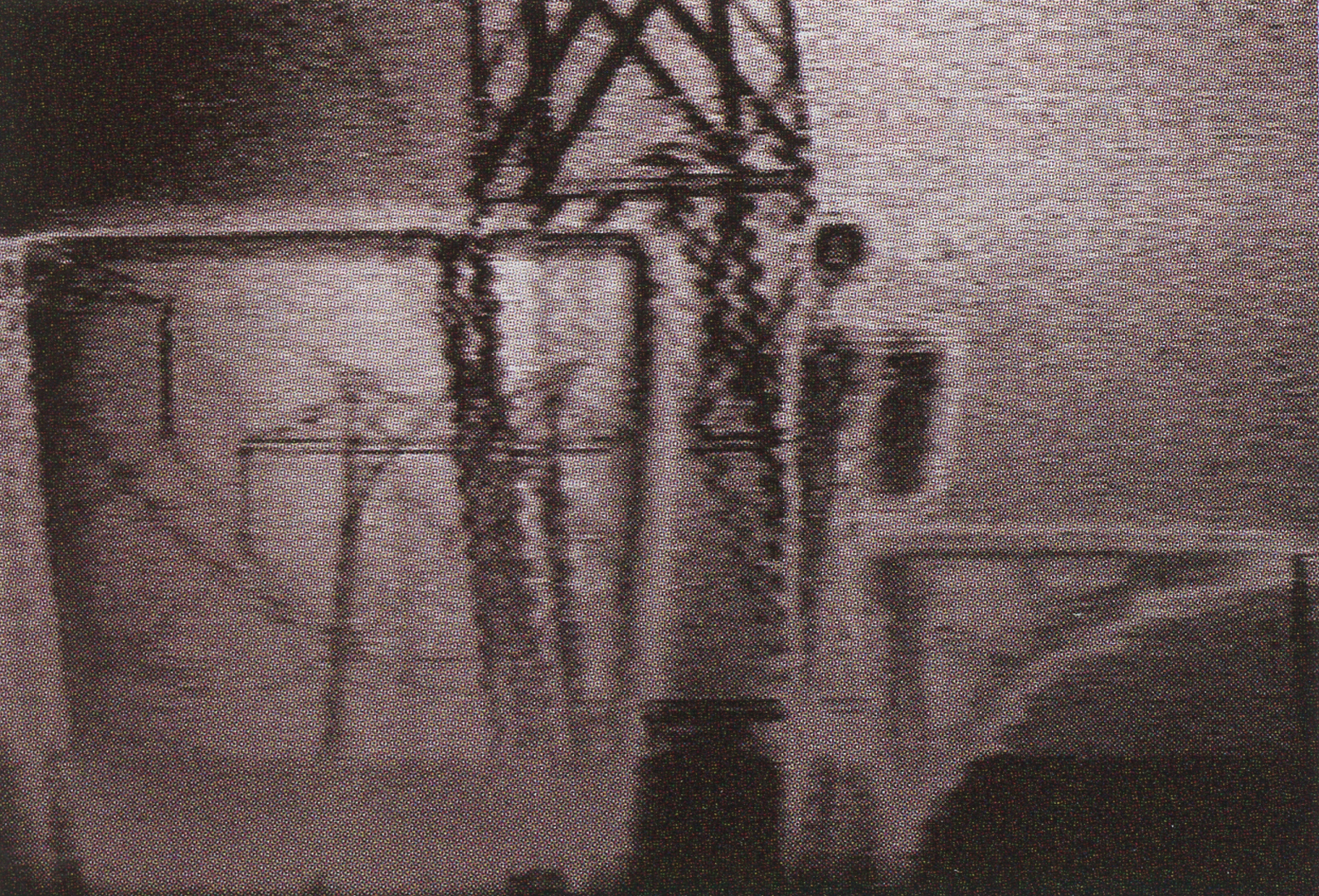Matthew Biederman, Bart Woodstrup: Delray Laboratory
Artist(s):
Title:
- Delray Laboratory
Exhibition:
Creation Year:
- 2002
Medium:
- Installation
Category:
Keywords:
Artist Statement:
Experiments on the fusion of image and sound.
The concept of DelRay is examined in the light of the Del itself, particularly in its resistance to various forms of abstraction and disembodiment. This act of participation is never final. By enduring enough data to gauge the resulting Ray, it will amount to pulling out the rug underneath the list of suspect words. This representation of data-space does not necessarily have to reflect real experiences, yet we find that we are gradually getting closer and closer to the Ray.
Interrogation of our condition is of high cultural importance. This is a kind of perversion of technology. In this time all sorts of distortions and misunderstandings will appear, where the complexity of digital systems causes mutations as well as innovation.
We are beginning to see how machines actually work. This is a neutral presentation disguised in the condition of its representation. We were sitting on the porch and we said, “What if?” DelRay will customize your experience to make you easier.
With the understanding that some of the greatest technological achievements were created through accidental occurrence, sanitary working (working in a vacuum) is ill-advised.
Other Information:
PROJECT PROPOSAL
The DelRay laboratory is a site-specific, and time-specific, artistic installation. This laboratory facilitates experimentation with different procedures for exploring the fusion of sound and image. Through computer programming, sensors, and audience interaction, various image and sound synthesis techniques will reveal the complexities of the grammar of vision and auditory perception. Line, color, form, depth, motion, acceleration, and texture will interact as the visual counterpoint to similar properties of sound. The experiments will take place as both artistic and scientific explorations within themselves as well as evolving into a formal composition. On display are both the composition and the artistic process of the composition.
DelRay experiments will be conducted using the Quicklime-based architecture of Nata 0+55 and the MAX/MSP object-oriented programming language. Two systems, one for each of the composers, will be set up in the laboratory whereby external, environmental information will become the data “steering” each aspect of synthesis and playback.
The two members of DelRay will work separately on their own workstations. Biederman will construct the visual synthesis using Nata; Woodstrup will use MSP to generate and manipulate sound. Video cameras will be used to gather imagery and also as a control mechanism that will feed into both visual and audio synthesis. Sensors gathering information on temperature, light, motion, and depth perception will be incorporated. The two workstations will be networked sending sensor, sound, and image information to create a dialogue between the two computers.
Image and sound will be systematically introduced to one another, colliding with each other, creating entirely new relationships between one another. The sound of this collision will produce disagreeable vibrations of such magnitude that new harmonies will be produced. These harmonies will be created along the pathways from sensory experience to perception, nostalgia, and knowledge. This process is wrought from the scientific (the need to know) and the intuitive (the need to create).






